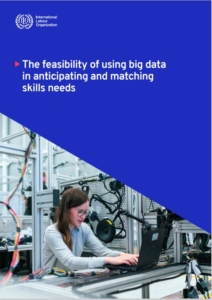JANZZ named as a Sample Vendor for Skills Ontologies in Gartner Hype Cycle for HCM Tech 2020
We are proud to announce that JANZZ.technology has been identified by Gartner as a Sample Vendor of Skills Ontologies in the Hype Cycle for Human Capital Management Technology 2020. This recognition validates the innovative approach of our solutions for businesses and public employment services based on our unique multilingual job and skills ontology.
What is the Gartner Hype Cycle?
“Gartner Hype Cycles provide a graphic representation of the maturity and adoption of technologies and applications, and how they are potentially relevant to solving real business problems and exploiting new opportunities. Gartner Hype Cycle methodology gives you a view of how a technology or application will evolve over time, providing a sound source of insight to manage its deployment within the context of your specific business goals.[1]
Skills Ontologies, rated as highly beneficial for HCM, are currently in the first of five stages in the Gartner Hype Cycle: the Innovation Trigger. Gartner describes this stage is the one where “a potential technology breakthrough kicks things off. Early proof-of-concept stories and media interest trigger significant publicity. Often no usable products exist and commercial viability is unproven.” We started developing our skills ontology over a decade ago, in 2009. It is now the most comprehensive multilingual skills ontology worldwide and has proven itself repeatedly over the past few years, being successfully deployed in multiple systems of any scale.
What is a Skills Ontology?
A skills ontology organizes large collections of concepts concerning capabilities, competencies, knowledge, and experience, as well as the relations between them in a data structure. It provides a basis for AI applications in areas such as talent acquisition, talent development and workforce planning. Numerous providers claim that they have an ontology when in reality, they only have a taxonomy or a library.[2] At JANZZ, we have a true ontology, JANZZon!. But it does not just include skills, it is a job and skills ontology. This means that it also encompasses occupations, job titles, work experience, training and qualifications, industries and much more. Matching skills alone without taking other information like occupations/roles into account can result in extremely inaccurate results. A retail cashier and a retail pharmacist will have skills in common, e.g., customer service skills, but their key skills, namely their specialist knowledge and their qualifications, differ dramatically. So even if all other listed skills are a match, it would be completely nonsensical to suggest a cashier for a pharmacist position. Context is essential, and one of the key types of information generated by our job and skills ontology.
Moreover, unlike other skills ontologies on the market, JANZZon! distinguishes levels of skills and their context. For instance, the level of skills required in a junior position are not the same as for a senior specialist, and the skill set of a project manager in application development is not identical to that of a project manager in interior design. These differences are represented in our job and skills ontology JANZZon! and are one of the driving factors in the astonishing accuracy of our job-candidate matching and career pathing tools.
Watch our video about the JANZZ ontology
Why not just stick with skills libraries and taxonomies?
Skills or job libraries, which many technology providers still rely on, are primarily built by experts (often psychologists) analyzing and classifying skills and skills levels related to job categories or functions. These methods are labor intensive and limited, often focusing on cross-functional skills or on a limited number of job-specific technical skills. Moreover, in the fast-changing world of work, these libraries are almost always outdated as soon as they are finalized.
The key issue with these libraries, however, is that there is no such thing as a standard skill profile for a given occupation. This means that search and matching results based on skills libraries are mostly disappointing at best. On the other hand, with the right skills ontology, you get a continuously updated, comprehensive database that provides the basis for technology that “transforms user expectations for relevance of job searches, matching of candidates to job roles, and recommendation of learning content.”[3]
The crucial advantage of a skills ontology compared with skills libraries or taxonomies is that it links synonyms as well as similar and related skills. This dramatically improves search and matching by translating the diverse vocabularies of different stakeholders, job postings and candidate/employee profiles into a common language and giving search terms context. As a result, classical keyword-based approaches can be replaced by semantic search where the system understands the meaning of search terms as opposed to stubbornly comparing strings of characters.[4] For instance, when entering the term CEO, the ontology-based system will exclude results like Assistant to the CEO. Or, upon entering the term Mechanic, it will suggest more precise terms like Auto Mechanic or Boat Mechanic. And the best people for the job can be identified much more accurately – without the noise of unsuitable candidates or the risk of top candidates slipping through the cracks.
Moreover, our ontology-based systems can recognize implicit skills in occupations ranging from Sign Painter to Cybersecurity Project Manager and use these skills to provide more satisfactory results – not only of jobs and candidates, but also in profiling, gap analyses and career pathing. The contextual knowledge stored in our skills ontology is also key to our highly performant job and CV parser.
Pioneering solutions in HCM tech
Most of the current ontology-based HCM applications on the market are still quite rough around the edges and there is no one-size-fits-all solution. Instead, a combination of models and approaches is needed. Here at JANZZ.technology, we already have a well-established skills ontology as well as highly accurate technology for semantic search and match, gap analyses, profiling, and job and CV parsing. However, we are driven to continuously improve and extend our solutions and thus very actively engaged in R&D, ceaselessly developing pioneering technology to tackle new challenges. Our mission is to help improve the HCM experience by providing efficient and highly performant solutions without compromise.
And why are we so far ahead of the Gartner Hype Cycle? Because we started in 2008, long before anyone was talking about AI and knowledge representations, long before Google and the markets realized that advanced AI solutions will simply be impossible without ontologies. That is why we have a head start of several years today.
Take advantage of this and integrate our job and skills ontology into your applications via our simple APIs. Contact us at info@janzz.technology to find out how we can transform your experience with our cutting-edge ontology-based solutions.
[1] Gartner Methodologies, “Gartner Hype Cycle,” 2020. https://www.gartner.com/en/research/methodologies/gartner-hype-cycle
[2] For a better understanding of the fundamental difference between ontologies and taxonomies, read our post: https://janzz.technology/ontology-and-taxonomy-stop-comparing-things-that-are-incomparable/
[3] Poitevin, H., “Hype Cycle for Human Capital Management Technology, 2020”, Gartner. 2020.
[4] For more information on this topic, request a copy of our white paper «Keyword vs. ontology based, semantic matching» via email or contact form.






